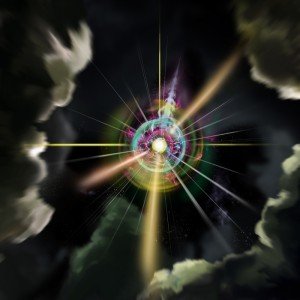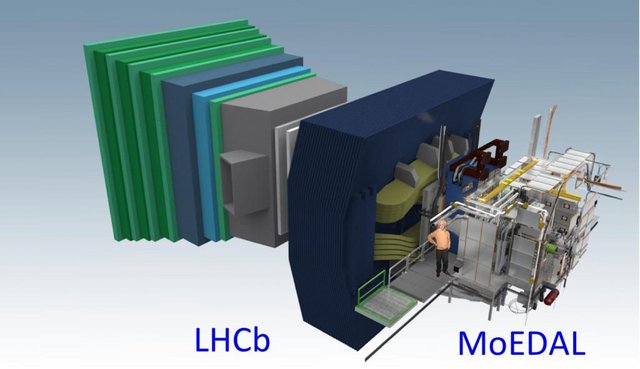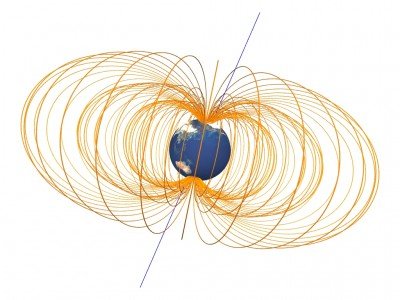Earlier today (10.08.2016), the MoEDAL experiment at CERN has published its first results concerning its hunt for magnetic monopoles. Nothing has been observed and the current constraints on the existence of such beasts have been made stronger. In this post, I will give a few details on monopoles and the MoEDAL experiment.
 [image credit: physicsworld]
[image credit: physicsworld]
MoEDAL? What is that?
There are various experiments around the Large Hadron Collider, the most well known being the four giants ALICE, ATLAS, CMS and LHCb. However, other smaller-scale (in term of participating scientists and countries) experiments exist and the MoEDAL is one of them.
The MoEDAL experiment has been designed for two things. First, it aims for observing magnetic monopoles and exotic particles that are massive and (meta)stable, and next it can trap these particles for further scientific investigations. And that actually gave its name to the experiment: MoEDAL is the acronym of Monopole & Exotics Detector at the LHC.

For more detailed on the MoEDAL apparatus, please have a look to the official experiment website where the above picture comes from.
What is a magnetic monopole?
Artistically speaking, a monopole event may look like to the picture on the top of this post. More practically, magnetic monopoles have never been observed (and this is why they are searched for).
What is exactly a magnetic monopole? To answer that question, it is good to start with electricity. There is a system of units for the electric charge. For instance, the charge of a proton is +1 and the one of an electron is -1, while the neutron is neutral (its charge is 0). Moreover, let us note that under its current form, matter is in general neutral: at the level of its constituents, we have as many positive electric charges than negative electric charges, and the net sum vanishes. That is all for what concern electro in electromagnetism.
 [credit: cronodon]
[credit: cronodon]
Moving on with the magnetism part of electromagnetism, we do not have anything like a magnetic charge. If we take a magnet, it contains both a north and a south pole. But we do not have single pole (or monopole). We can cut a magnet in two, we will get two magnets, each having a north pole and a south pole. And so on. We can cut a magnet in super-tiny bits, this property of having two poles stays. Even at the elementary level, magnetic poles are coming as pairs of north-south poles. And this works also for giant objects (see the picture of the magnetic field of the Earth above).
How to find a magnetic monopole?
And this is what the searches for magnetic monopoles are about: trying to observe effects that could be explained only by the presence of magnetic monopoles, or magnetic charges. From the current data, it is clear that if magnetic monopoles exist, they are very massive (otherwise, we should have observed them already). Therefore, we need a lot of energy to produce them, and they could be produced in highly energetic collisions such as occurring at the Large Hadron Collider at CERN.
Such an LHC collision could indeed produce a pair of magnetic monopoles, one of them being a north pole guy and the other one being a south pole guy (all my particles are guys :) ). Among the properties of those monopoles, they must have an amazing ionizing power that is several thousands of times the one of the proton. In short, they will quickly interact with neutral matter and free electrons that are bounded to atoms, and this can be observed as charged tracks in a detector. As a result of their interaction, their energy will decrease and they will finally get trapped in the detector. It is then sufficient to scan the detector afterwards and check the presence (or absence) of magnetic charges to be able to write conclusive statements about monopoles.
Some equations to make the equation fans happy
For those interested by equations, electric charges obey Maxwell’s laws of electromagnetism:

We can observe that the electric field (E) and magnetic field (B) dependence of these equation is almost symmetric. The symmetry is broken by the presence of a density of electric charge (rho) and the density of electric current (j). One appealing theoretical property of the existence of magnetic monopoles is that Maxwell’s laws become fully symmetric: there will be a non-vanishing magnetic density of charge (rho’) and a non-vanishing density of magnetic current (j’) (with properties similar to those of the electric counterparts):

Merci pour nous intéresser à ce phénomène.
Downvoting a post can decrease pending rewards and make it less visible. Common reasons:
Submit
For once, I understood what you are talking about until... the equations and then, back to the usual non-understanding... ;)
Downvoting a post can decrease pending rewards and make it less visible. Common reasons:
Submit
Really interesting... Following you
Downvoting a post can decrease pending rewards and make it less visible. Common reasons:
Submit